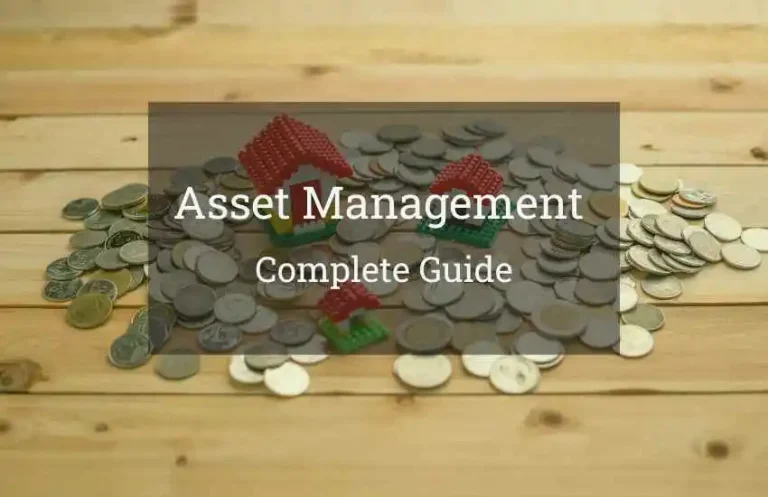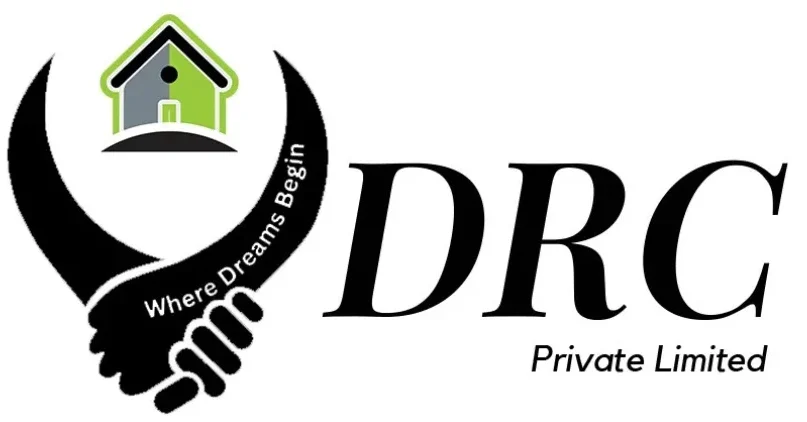
| Dimensions | |
| Square Yards | |
| Square Meters | |
| Marlas | |
| Acres |
Digital marketing
What we do?
Table of Contents

Asset management involves strategically developing, maintaining, and optimizing assets to maximize their value and support long-term goals. It encompasses both physical and financial assets, integrating portfolio management, cost-efficiency, and risk analysis. By identifying financial objectives and managing assets like stocks, real estate, or equipment, the process ensures informed decisions and promotes sustainable growth. For more details, explore our Asset Management Complete Guide.
Asset life cycle:
Encompasses all phases of an asset’s life, from initial acquisition to disposal. In addition, the key stages include:
Planning: Identifying asset needs, budgeting, and planning for acquisition.
Acquisition: Procuring or developing the asset.
Operation: Using the asset for its intended purpose.
Maintenance: Performing regular upkeep to ensure optimal performance.
Depreciation: Recognizing the decline in asset value over time.
Disposal: Retiring, selling, or disposing of the asset when it is no longer useful or economical.
AM is a multi-step operation that is largely automatized once the basic stages are completed.
There are 4 key stages in the asset life cycle,
1. Planning:
The initial step in the asset management process is planning, which involves confirming and defining asset requirements. Furthermore, this determination is made by assessing existing assets to ensure they can meet service delivery needs and identifying necessary management strategies to evaluate asset requirements.
Effective planning in asset management offers several benefits to a company:
- Assessing the adequacy of existing assets.
- Ensuring timely availability of resources.
- Maintaining and managing accountable assets.
- Securing funding for asset procurement.
- Evaluating options for asset provision.
- Identifying surplus assets.
2. Acquisition:
To make the best decision, consider the cost and requirements before choosing the optimal option. In addition, this decision-making stage is part of the acquisition planning process, which involves activities to ensure a cost-effective asset purchase, including design and procurement. Furthermore, these steps ensure the asset’s suitability for its intended use.
Initially, determine if the asset will be purchased outright or produced internally. Then, set a budget for the acquisition, establish a timeline, and define the purchasing needs. A well-planned budget and cash flow are crucial to avoid financial shortages that could jeopardize the acquisition process. Once these criteria are met, a project team should oversee the process to ensure all acquisition activities align with service delivery and business objectives.
3. Operation and Maintain:
Now that your assets are operational, you can perform various tasks with them. First, evaluate the asset’s importance and decide the best maintenance approach. Determine whether it needs preventive, routine, predictive maintenance, or another strategy.
Maintenance should be a priority in asset management plans, especially for long-lasting assets like public buildings and roads. Additionally, these assets require ongoing maintenance throughout their life cycle.
During this period, focus on monitoring, maintaining, and possibly enhancing the asset to meet changing operational needs.
4. Disposal:
When an asset becomes obsolete, it may be considered surplus or underperforming. In such cases, the logical step is to dispose of or replace the asset. Furthermore, the disposal process should account for its impact on service delivery and departmental responsibilities. If an asset is nearing disposal, the maintenance strategy must be adjusted to meet statutory requirements.
Effective asset management is crucial for financial planning and investment strategy, ensuring assets are systematically managed to maximize value and optimize performance over time. For a comprehensive breakdown of each phase and strategy, refer to our Asset Management Complete Guide, a valuable resource for efficient asset management.
Types of Asset Management:
There are primarily nine/9 types of asset management.
This traditional approach to asset management includes investments, brokerage, real estate, and intangible assets. It also involves managing acquisitions, budgets, and financial instruments like stocks, bonds, and mutual funds. For more insights, refer to our Asset Management Complete Guide.
Additionally, the primary goal is to expand the investment portfolio while balancing risk and return. Financial asset managers analyze market trends, economic conditions, and company performance to make informed decisions that align with the client’s financial objectives. For a deeper understanding of this approach, refer to our Asset Management Complete Guide.
(2) Real Estate Asset Management:
This type focuses on managing real estate properties to enhance their value and generate income. Real estate asset managers oversee the acquisition, development, leasing, and maintenance of properties. They work to maximize rental income, property value, and overall return on investment while ensuring compliance with regulations and market trends.
Fixed asset management helps organizations track and maintain physical assets like machinery, equipment, and vehicles. It ensures efficient use, timely maintenance, and minimal downtime. For best practices and tools, see our Asset Management Complete Guide.
In today’s digital era, managing digital assets like images, videos, and documents is crucial. Digital Asset Management (DAM) systems help organizations store, organize, and retrieve content efficiently. Moreover, DAM fosters collaboration, ensures brand consistency, and boosts productivity for creative and marketing teams.
DAM also oversees digital resources such as social media, websites, and intellectual properties. By securing access to critical assets like intellectual property rights and meeting recordings, it reduces the need for duplicate storage. Additionally, this strategy enhances security against risks like natural disasters and data loss.
Even businesses not focused on digital products can benefit from DAM practices. To learn how to implement DAM effectively, refer to our Asset Management Complete Guide.
Intellectual property (IP) assets include patents, trademarks, copyrights, and trade secrets. Managing these intangible assets, therefore, involves protecting and monetizing IP rights to maximize their value. Additionally, IP asset managers handle the registration, enforcement, and licensing of IP assets, ensuring that they are properly utilized and generate revenue for the organization.
In conclusion, asset management is a multifaceted field that encompasses various types of assets, each requiring specialized strategies and expertise. Furthermore, whether managing financial portfolios, real estate properties, physical equipment, digital content, infrastructure, or intellectual property, effective asset management is essential for maximizing value and achieving long-term success. To gain a deeper understanding of strategies for managing all asset types, refer to our Asset Management Complete Guide.
Enterprise asset management is a rapidly growing aspect of organizational strategy. It encompasses the acquisition, operation, maintenance, and decommissioning of enterprise assets. Additionally, the definition is sometimes expanded to include intangible assets. Furthermore, this process involves documentation, inventory records, productivity, and the condition of facilities. To better understand the full scope and best practices for managing enterprise assets effectively, refer to our Asset Management Complete Guide.
Managing public infrastructure assets like roads, bridges, and utilities is vital to support daily life and economic activity. These assets, in turn, ensure efficient transportation, safe connectivity, and reliable essential services. For more on maintaining and optimizing public infrastructure, refer to our Asset Management Complete Guide.
Moreover, investing in public infrastructure goes beyond maintenance—it’s about innovation and future-proofing. Smart grids, renewable energy, and improved transit systems are key to building sustainable, resilient communities. To explore strategies for managing these assets, refer to our Asset Management Complete Guide.
Public asset management, although similar to infrastructure asset management, covers a broader range of facilities such as parks, schools, airports, and public spaces. Its primary goal is to extend asset lifespan through strategic planning, maintenance, and investment. Additionally, regular assessments and data-driven decisions help optimize resource allocation. Moreover, engaging with communities strengthens long-term stewardship. For more insights, refer to our Asset Management Complete Guide.
Furthermore, technological advancements like GIS, IoT sensors, and predictive analytics have transformed asset management by enabling proactive maintenance and quicker issue resolution. These tools are crucial in creating resilient, adaptable public spaces that promote sustainability and economic growth. For more insights, explore our Asset Management Complete Guide.
Management of hardware and software within an organization is known as IT asset management. Moreover, IT assets comprise both tangible items like computers, printers, and routers, as well as intangible assets such as software licenses, subscriptions, and patents. Here are some benefits:
- Establish a solid technological infrastructure
- Enhance security measures
- Save time and resources
IT asset management encompasses a structured approach to retrieve, store, organize, and distribute information, whether online or offline. Furthermore, this practice is valuable across all types of companies, from service providers to other industries. For a deeper dive into best practices and strategies for managing IT assets effectively, refer to our Asset Management Complete Guide.
Process of Asset Management:
The asset management process involves systematically managing and optimizing an organization’s assets over their lifecycle. It guarantees efficient asset utilization, proper maintenance, and timely replacement or disposal to enhance their value and alignment with the organization’s objectives. Furthermore below is an in-depth look at the asset management process:1.
(a) Cataloging Assets
Compile a comprehensive inventory of all assets, noting specifications, location, condition, and ownership details.
(b) Tagging and Labeling
Employ barcodes, RFID tags, or GPS trackers to assign unique identifiers to each asset.
- Initial Valuation: Establish the purchase cost or initial value of the asset.
- Depreciation: Compute the asset’s depreciation over time to assess its present value.
- Needs Assessment: Determine asset requirements according to organizational goals and operational needs.
- Budget Allocation: Assign financial resources for asset acquisition, maintenance, and eventual replacement.
(a) Procurement;
Acquire assets through purchase or lease based on identified needs and budget.
(b) Implementation;
Set up and adjust assets to ensure they are operational and prepared for use.
(a) Deployment
Assign assets to specific locations or departments for operational use.
(a) Utilization Tracking
Monitor the usage of assets to ensure they are being used efficiently and effectively.
- Preventive Maintenance: Plan and carry out routine maintenance activities to avoid asset failures and prolong their usability.
- Condition Monitoring: Keep a constant check on the condition and efficiency of assets to identify problems at an early stage.
- Corrective Maintenance: Undertake repairs and necessary actions when assets encounter malfunctions or breakdowns.
- Performance Metrics: Define key performance indicators (KPIs) to assess asset performance, including uptime, utilization rate, and maintenance expenses.
- Data Analysis: Examine performance data to detect patterns, challenges, and areas for enhancement.
- Reporting: Produce reports on asset performance, maintenance tasks, and financial implications for stakeholders.
- Enhancing asset efficiency and effectiveness through process improvement by implementing changes based on performance evaluations.
- Maintaining competitiveness and operational efficiency by upgrading assets with the latest technology.
Recognize when assets are no longer practical or cost-effective to keep.
Properly dispose of or recycle assets in compliance with regulations and environmental standards.
Strategize and implement the replacement of assets with new ones to maintain operational continuity.
(a) Record Keeping;
Keep thorough records of all asset-related actions, such as acquisition, upkeep, and disposal.
(b) Compliance;
Guarantee that all asset management tasks adhere to applicable regulations, standards, and industry norms.
Asset management is crucial for optimizing asset lifecycle, reducing costs, and maximizing value. Organizations benefit from better control, operational efficiency, and informed decisions on asset investments and disposals. Furthermore Asset Management software automates tasks and offers real-time visibility into asset performance and status.
Asset Management Softwares:
There are some asset management software or tools that enable you to do operations such as identity, locate, snd monitor important assets like tools, equipment, and people.
Here are some benefits of asset management software;
- Locate assets effortlessly
- Monitor equipment condition effectively
- Track the history of your assets
- Enhance Work-In-Process (WIP) tracking
- Minimize compliance risks
- Simplify audit processes
- Guarantee employee safety
- Additional capabilities
Asset management software is essential for organizations looking to efficiently manage their assets, from IT equipment to real estate holdings. In addition, here are seven useful asset management software solutions that can streamline processes, improve accuracy, and enhance overall management.
A comprehensive asset management solution, IBM Maximo offers a suite of tools for managing physical assets on a global scale. Moreover, it provides capabilities for predictive and preventive maintenance, inventory management, and procurement. IBM Maximo is highly customizable, making it suitable for various industries, including manufacturing, energy, and transportation. To fully understand how to implement and optimize IBM Maximo for your organization, refer to our Asset Management Complete Guide.
This versatile asset management platform is designed to help organizations track, manage, and support their assets throughout their lifecycle. Moreover, Asset Panda offers features such as barcode scanning, mobile access, and customizable reporting. It is particularly appreciated for its user-friendly interface and the ability to manage assets from anywhere using its mobile app. For a more detailed overview of how to leverage Asset Panda and other asset management solutions, refer to our Asset Management Complete Guide.
SAP EAM is a robust solution for businesses looking to integrate asset management with their enterprise resource planning (ERP) system. Furthermore, it also enables comprehensive asset tracking, maintenance scheduling, and performance monitoring. SAP EAM is known for its scalability and ability to handle complex asset structures, making it ideal for large enterprises. To learn more about how SAP EAM can optimize your asset management processes, refer to our Asset Management Complete Guide.
Now part of SolarWinds, Samanage provides a cloud-based IT asset management solution with a focus on simplicity and ease of use. Additionally, it includes features like asset discovery, lifecycle management, and compliance tracking. Samanage is particularly beneficial for IT departments seeking to streamline their operations and improve service delivery. For a comprehensive understanding of how to maximize the use of Samanage and other IT asset management solutions, refer to our Asset Management Complete Guide.
ServiceNow’s asset management module integrates seamlessly with its broader IT service management suite, offering a unified platform for managing IT assets and services. It provides comprehensive visibility into asset performance, lifecycle management, and financial tracking. Furthermore service now is highly regarded for its robust automation capabilities and flexibility.
This web-based asset management tool helps organizations manage their IT assets efficiently. ManageEngine AssetExplorer offers features such as asset discovery, software license management, and compliance reporting. Furthermore it is praised for its affordability and ease of integration with other Manage Engine products.
- Fiix is a cloud-based maintenance management solution that helps organizations manage work orders, schedule preventive maintenance, and track asset performance. Known for its user-friendly interface and strong reporting, it’s ideal for manufacturing and facility management. To explore more tools like Fiix, check out our Asset Management Complete Guide.
IBM Maximo
- Comprehensive enterprise asset management (EAM) solution.
- Features include work order management, predictive maintenance, and asset tracking.
- Suitable for industries like manufacturing, energy, and utilities.
SAP EAM (Enterprise Asset Management)
- Integrated with SAP’s enterprise resource planning (ERP) system.
- Offers asset lifecycle management, predictive maintenance, and IoT integration.
- Ideal for large organizations with complex asset management needs.
Infor EAM
- Cloud-based asset management solution.
- Provides mobile capabilities, advanced analytics, and configurable workflows.
- Used in industries such as healthcare, public sector, and transportation.
Asset Panda
- User-friendly asset tracking and management software.
- Features include mobile access, barcode scanning, and custom reporting.
- Suitable for small to medium-sized businesses.
Dude Solutions
- Asset management and maintenance software tailored for education, healthcare, and government sectors.
- Offers features like work order management, preventive maintenance, and asset tracking.
Samanage
- IT asset management solution.
- Provides asset tracking, incident management, and software license management.
- Suitable for IT departments and service management.
Fiix
Cloud-based maintenance management software offers features like work order management, preventive maintenance, and asset tracking widely used in industries like manufacturing, facilities management, and energy. Additionally, it supports efficient asset utilization and performance. For tools, strategies, and best practices, explore our Asset Management Complete Guide.


